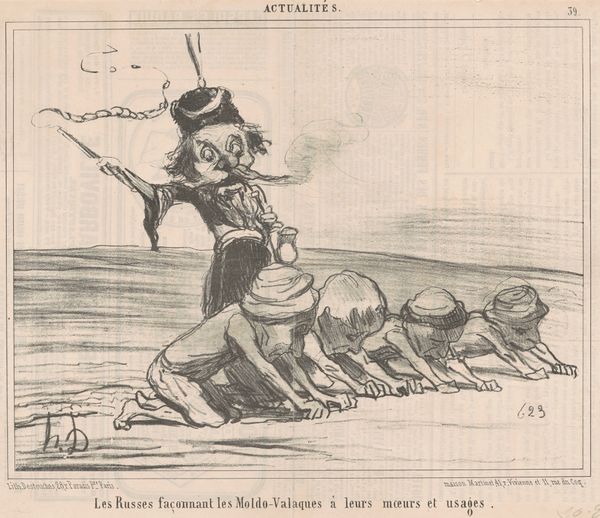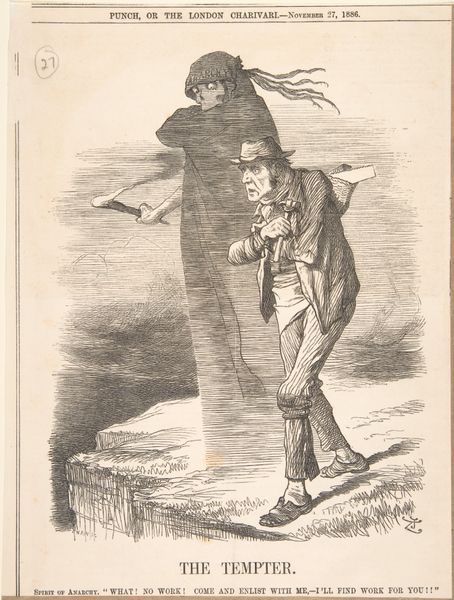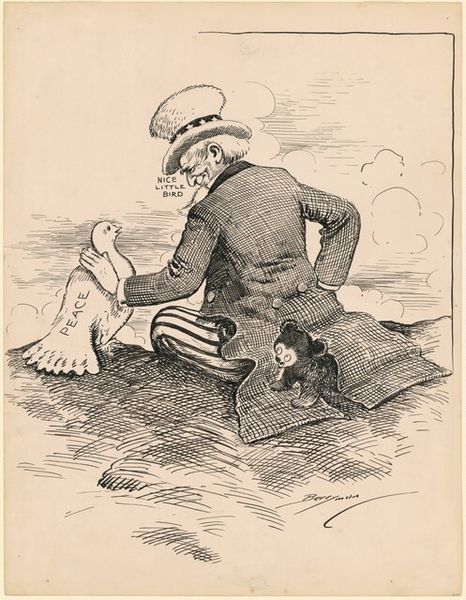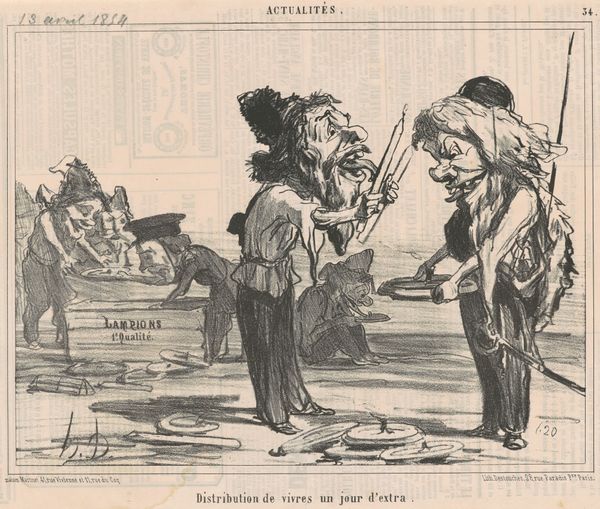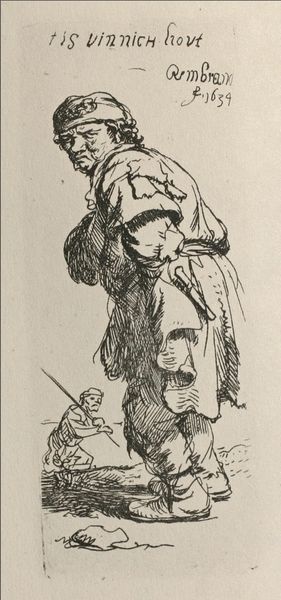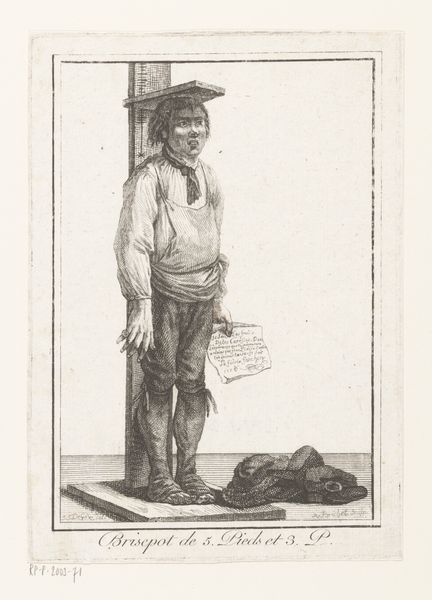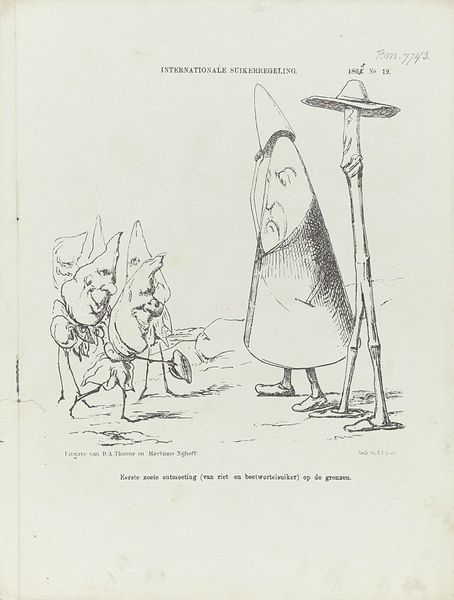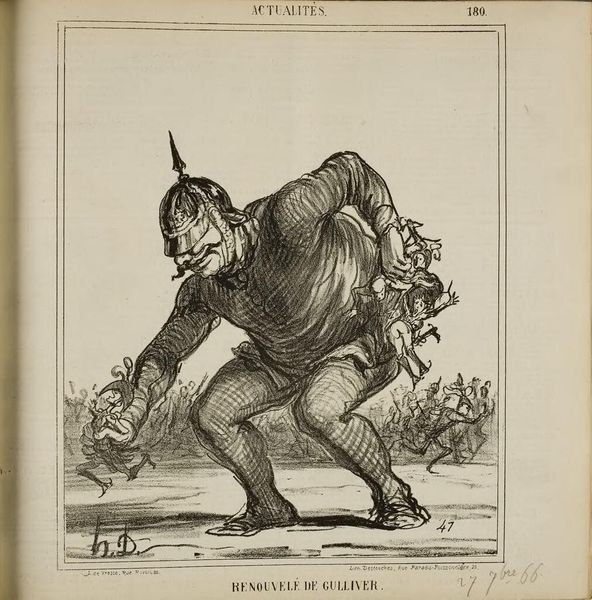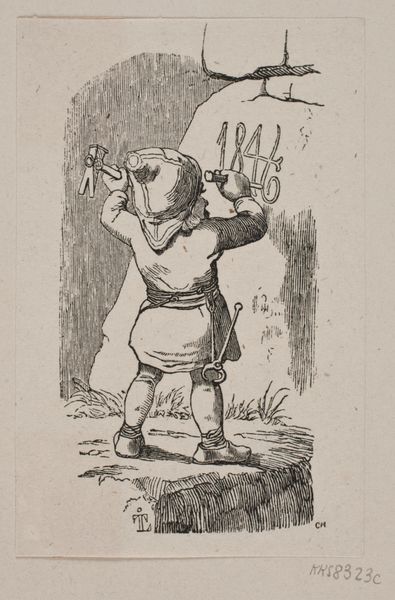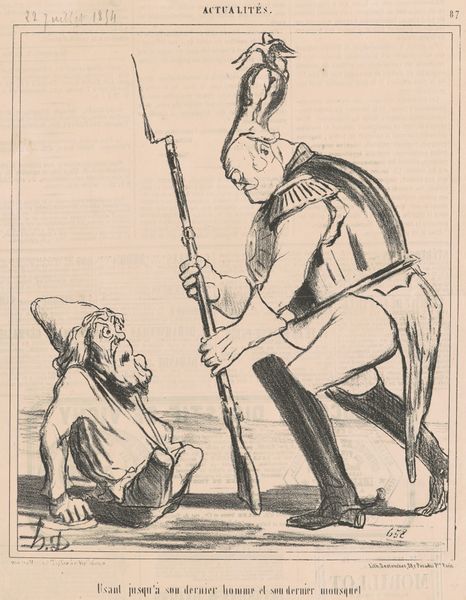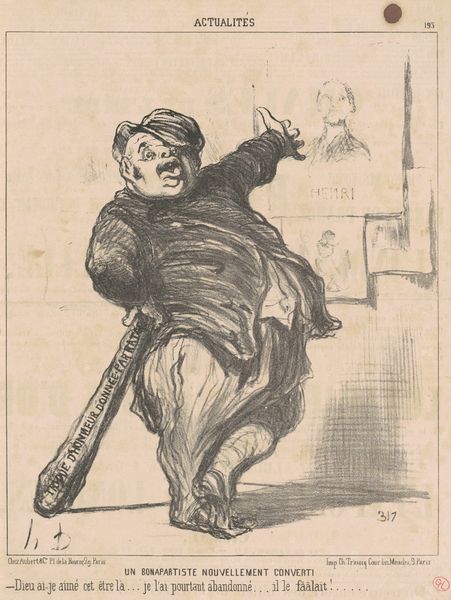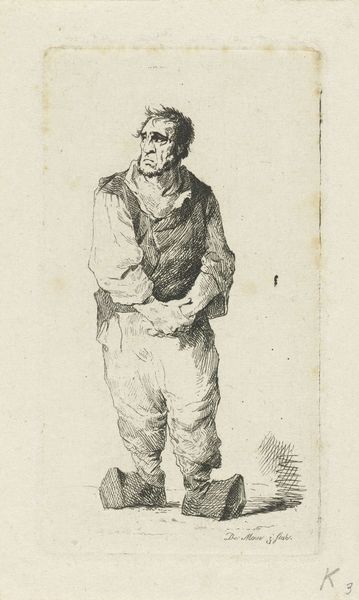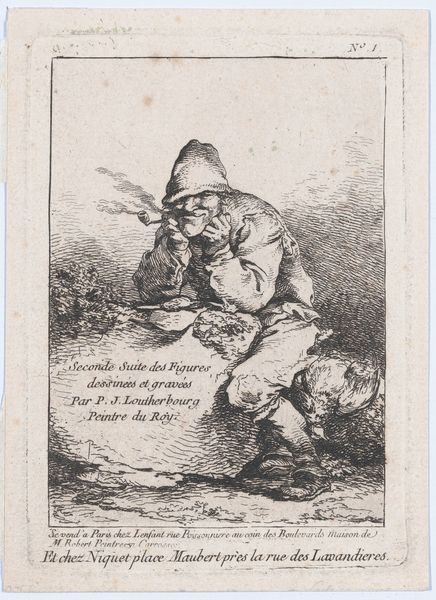
Spotprent op de zware financiële belasting op het land door grote werken aan de infrastructuur, 1860 1860
0:00
0:00
drawing, pencil
#
drawing
#
caricature
#
pencil sketch
#
pencil
#
pencil work
Dimensions: height 275 mm, width 215 mm
Copyright: Rijks Museum: Open Domain
Editor: This is a pencil drawing from 1860, titled "Spotprent op de zware financiële belasting op het land door grote werken aan de infrastructuur" by Johan Michaël Schmidt Crans. It's a Dutch political cartoon with an anthropomorphic lion-figure, weighed down by literal burdens labeled "Railways" and "Waterways." It has a somber, even despairing tone. What do you see in this piece? Curator: I see a scathing indictment of governmental overreach and its impact on the populace. This lion, a traditional symbol of Dutch national pride, is reduced to a prisoner, shackled to the costs of infrastructure projects. The weight isn’t just financial; it's societal. Look at how the artist uses caricature to portray the government’s indifference. What does the phrase "Travaux Forcés à Perpétuité" – forced labor in perpetuity – suggest to you? Editor: It sounds like this burden is never going away and that this isn't just a critique of a particular policy but a commentary on a perpetual imbalance of power between government and citizens. The French phrase maybe implies wider European trends? Curator: Exactly! It places the local situation within a broader, arguably colonial, dynamic where the state extracts labor and resources seemingly without end. How does this portrayal of infrastructure development challenge conventional narratives of progress and modernization? Editor: It highlights the human cost and questions who really benefits from these advancements. It makes me think about the displacement and economic hardship that often accompany large-scale projects, even today. Curator: Precisely. The artist uses visual satire to prompt us to question dominant ideologies, to look beyond the glossy surface of "progress" and to acknowledge the often-invisible communities who bear the weight of its advancement. Editor: So, it's not just about history; it's a visual reminder to critically assess power dynamics in contemporary society, too. Thanks! Curator: My pleasure. It highlights the enduring relevance of art as a tool for social commentary and instigation for change.
Comments
No comments
Be the first to comment and join the conversation on the ultimate creative platform.
